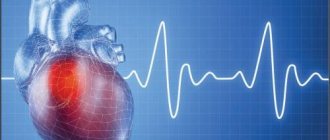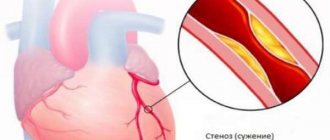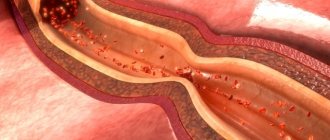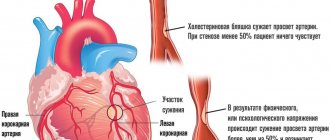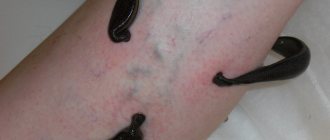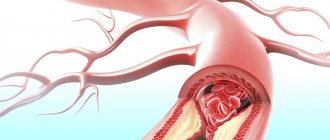Cardiovascular diseases are one of the most significant factors influencing mortality rates. Death is caused mainly by coronary heart disease (CHD). Its common form is angina pectoris, which, in turn, also has 4 degrees of severity.
Zmist:
- The essence and typology of forms of the disease
- How the disease develops
- Diagnosis of the disease
- First aid for a seizure
- Treatment of the disease
The essence and typology of forms of the disease
The heart, the main muscle of the body, receives nutrition through the supply of oxygen and nutrients through the arteries. The daily requirement may increase if a person performs a certain physical activity. Accordingly, blood flow to the main organ increases.
The coronary and coronary arteries, which “serve” the heart, come from the aorta. If they are not normal, blood flow is disrupted. This means that a certain part of the heart muscle will not receive enough oxygen and the necessary substances for normal functioning.
This failure is called ischemia. If this condition lasts more than 30 minutes, cardiomyocytes in the heart begin to die, which leads to myocardial infarction. The pathology can become more active when the permissible level of physical activity is exceeded and is accompanied by pain.
There are 4 functional classes of the disease (FC). The main criterion for differentiation is the severity of the form and the permissibility of physical activity:
- FC 1 is a relatively mild degree of the disease, in which moderate exercise is allowed. An attack is possible only in case of extreme physical stress.
- FC 2 involves restrictions on physical activity. This class includes patients whose angina attack begins after walking 500 m or when climbing stairs to the second floor. In addition, patients are not recommended to walk in cold and windy weather, to be active immediately after waking up from sleep, or to experience emotional stress. All this can also provoke a deterioration in well-being.
- FC 3 significantly limits a person’s physical activity. An attack can be triggered by walking at an average speed for 100-500 m and climbing a flight of stairs.
- FC 4 is the most severe form. This is a disability in which seizures can occur even when at rest.
The most common form among heart patients is FC 3, which is regarded by doctors as a disability. In combination with other diseases, for example, tachycardia or arrhythmia, ischemic heart disease (IHD) angina pectoris can provoke attacks for no apparent reason when the patient is at rest.
It is also worth noting that patients with FC 3 disease can usually control their abilities well. They are also able to sense upcoming attacks. This helps to neutralize them in advance and reduce the intensity to nothing.
to the point ↑
Basics of classification
Stable angina pectoris of functional class No. 1 is characterized by good tolerance to normal physical activity. The appearance of attacks in such a person can only be observed as a consequence of heavy stress.
Functional class 2 angina causes limitation of physical activity. Climbing stairs and even normal walking can trigger an attack. Often the cause of attacks is factors such as emotional excitement or cold.
Stable angina pectoris of functional class No. 1 is characterized by good tolerance to normal physical activity. The appearance of attacks in such a person can only be observed as a consequence of heavy stress.
How the disease develops
Damage to blood vessels can be caused by diabetes mellitus, cholesterol deposits and other reasons, due to which so-called plaques form on the walls of the arteries. They narrow the passage in the blood vessels, preventing normal blood circulation.
An attack of IHD angina pectoris with FC 3 or 4 is most often accompanied by severe pain. But sometimes it can be limited only to severe shortness of breath, cough and weakness. The main distinguishing feature of the disease: when a crisis occurs, you can always clearly determine the beginning and end.
The pain may spread to an area on the left side of the torso, behind the breastbone. Sometimes it involves the left arm, jaw or shoulder blade. The patient experiences sensations of pressure and compression in the heart area. With FC 3 or 4, pain may also be accompanied by the symptoms already listed above - shortness of breath, cough, etc.
During an attack, a person usually feels a characteristic pressing pain. It cannot be confused with anything and cannot be overcome if the appropriate drugs are not at hand. Fortunately, the attacks are usually short and often end unexpectedly, at the very peak of frustration. The disease is dangerous, first of all, due to the increased chances of getting a myocardial infarction.
Usually an attack with FC 3 or 4 lasts about 3-5 minutes, but in some patients it can be significantly delayed. In particularly advanced cases or after severe overload, the patient’s pain intensity can be wave-like, ranging from severe to excessive. In this case, you must immediately call an ambulance, since conventional neutralizers are not able to stop the crisis.
It is also worth noting that, depending on the predictability and nature of the attacks, angina in FC 3 or 4 can be stable or unstable:
- A stable form suggests that the patient can predict the onset of a crisis. He knows for sure that if he does not exceed a certain standard of physical activity, he will be able to avoid pain. In this case, the disease is easy to control. The main thing is to define in advance the limits of what is permitted and calculate your capabilities.
- In the case of an unstable form, attacks can begin without cause or prerequisites. The insidiousness of the disease is also that conventional medications may not help.
The forms of the disease largely determine the course of diagnosis and treatment that will be prescribed to the patient.
to the point ↑
Diagnosis of the disease
Due to the specific clinical picture, diagnosing coronary artery disease angina is not particularly difficult for specialists. A cardiologist can determine the disease based on patient complaints alone. The diagnosis is even more likely if one of the patient’s relatives suffers from similar attacks in forms FC 3 or 4.
To confirm the disease, a series of instrumental examinations is used.
Holter monitoring
These include:
- electrocardiogram;
- Holter ECG monitoring;
- stress tests;
- Ultrasound of the heart;
- blood chemistry;
- myocardial scintigraphy;
- coronary angiography.
The most common and accessible diagnostic method is an electrocardiogram. To obtain more accurate data, it is recommended to do it directly during an attack.
Holter monitoring involves a series of ECGs, the results of which are recorded throughout the day using a special device. The patient goes about his business as usual. He independently records the monitoring data in a diary.
Stress testing is testing a patient while performing physical exercises or being in certain conditions. Bicycle ergometry, cold test, treadmill test and other methods are used to determine the functional class of the disease and disability.
Ultrasound of the heart can detect disturbances in the functioning of the valve apparatus and myocardial contractions, which usually accompany ischemia of the heart muscle.
A biochemical blood test is used to diagnose the condition of blood vessels. In particular, they are tested for cholesterol and the degree of atherosclerotic lesions, which makes it possible to determine the degree of blood flow intensity.
to the point ↑
Signs and treatment of coronary artery disease, angina pectoris FC No. 3
- Etiology of the disease
- Basics of classification
- More about FC No. 3
- More information about the symptoms of coronary artery disease, angina pectoris FC No. 3
- Diagnostic measures
- Basics of therapeutic treatment
IHD angina pectoris FC No. 3 is one of the forms of coronary heart disease. Today, one of the biggest medical problems in any developed country is diseases affecting the cardiovascular system.
They often lead to adverse consequences such as disability or mortality. A special role is given to coronary heart disease (CHD).
First aid for a seizure
Angina pectoris is a chronic disease. Therefore, a complete cure is not always possible and only through surgical intervention.
But first of all, the patient and his immediate environment need to learn how to provide first aid during attacks.
Nitroglycerin and drugs based on it are the main means for stopping a crisis. At the first symptoms, the patient needs to put one tablet under the tongue and dissolve it. If the attack is severe, you can give it twice. It is better if the oral cavity is sufficiently moist. The maximum dose, 5 tablets, is taken in extremely severe cases when medical help is not expected.
You can also use a spray instead of tablets. The results of the action of nitroglycerin can be seen within a couple of minutes.
Sometimes they try to stop the attack with validol. This is a grave mistake, since this medicine not only does not help, but can cause serious harm to health.
But those around you can use simple ways to ease the crisis. To do this, it is necessary to stabilize the patient’s condition as much as possible, both physically and morally:
- the person must be allowed to stand for a while and catch his breath if the attack was provoked by intense physical activity;
- if the cause is stress, the patient needs to be reassured;
- it is important to provide the person with a sitting or semi-sitting position, as well as an influx of fresh oxygen;
- the body should be freed from any oppressive objects, including belts, collars, and excess outerwear;
- You can place heating pads with warm water on your feet.
to the point ↑
Treatment of the disease
Aspirin should be used for therapeutic purposes. The drug reduces blood viscosity and facilitates its fluidity inside the vessels. For the same purpose, it is recommended to take:
- beta blockers;
- calcium antagonists;
- mixed action antiadrenergic drugs;
- vasodilators.
The course of therapy usually includes sedatives. It is important to understand that treatment must be supervised by a cardiologist. If you have this diagnosis, you should also acquire several useful habits:
- Always carry a pack of nitroglycerin or spray with you. You can also stock up on medication at work and at home.
- Before possible physical or emotional overload, you need to put a tablet under your tongue in advance.
- Observe nutritional culture and maintain a routine. The condition of the blood vessels directly depends on this. The more cholesterol is deposited on their walls, the worse the blood flow and nutrition of the heart muscle, and the longer and more intense the attacks will be.
- Monitor your condition and regularly attend general examinations. This is a must to keep attacks to a minimum. Suffering from obesity, advanced diabetes or other cardiovascular diseases, it is very difficult to get rid of the disease.
- Move as much as possible. With angina pectoris FC 3, sports and intense walking are prohibited. However, it is acceptable to move slowly, shop on your own, or take a walk. You must first discuss your physical activity norm with a specialist.
You must stop smoking and overeating fatty foods. If all preventive and therapeutic measures do not help achieve complete recovery, the patient may be recommended invasive intervention. This could be bypass surgery or coronary artery grafting. Such radical treatment is applicable if angina attacks in forms FC 3 or 4 pose a real threat to the patient’s life.
You should not start a disease that can provoke the parallel development of cardiovascular disorders: tachycardia, severe forms of arrhythmia, heart attack. As a rule, complications progress and lead to disability.
Prognosis for angina pectoris
The prognosis for exertional angina if all treatment recommendations are followed depends on the degree (functional class):
- Mild stable angina pectoris (FC 1) with proper treatment in 75–85% does not progress or goes away at all.
- The average degree of angina (FC 2) in 75% becomes mild, in 15% it progresses slowly, in 10% it temporarily (from several months to several years) disappears altogether or is complicated by a heart attack.
- Severe angina (FC 3) in 50% becomes moderate (FC 2), in 25% it does not progress, in 25% it leads to a heart attack or severe heart failure. It is impossible to get rid of it forever.
- Extremely severe angina FC 4 in 30% progresses to FC 3, in 70% it proceeds stable, complicated by a heart attack or heart failure.
- Unstable angina occurs unpredictably.
- Refusal of treatment or non-compliance with all recommendations 100% leads to either progression of the disease or complications.
Angina itself is not a fatal disease. But its complications, or transition to acute forms of coronary heart disease, are the most common cause of mortality. Remember this and do not leave the disease unnoticed!
okardio.com
